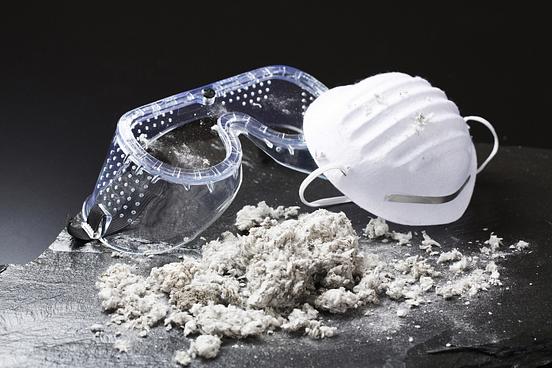Carcinogenic silica dust is a major concern for businesses because of the deadly impact it can have on employee health. Here’s our guide to where it comes from and how you can eliminate it.

Silica dust (also known as quartz dust) is formed from silicon dioxide, a chemical compound that makes up most of the world's sand deposits. It’s also found in types of stone of clay, which means it can be in many everyday building materials like brick, mortar, concrete and tiles.
Silica dust happens when these materials are subjected to drilling, cutting, grinding, polishing and any abrasion, so all activities that can happen regularly in some workplaces.
What makes it particularly dangerous is that it is so light and fine that it can spread easily and end up being inhaled by people nowhere near where it was released.
And it’s everywhere.
Even the everyday abrasion of a floor – from as little as the footsteps of staff to heavier traffic like forklift trucks – in a workplace can release silica dust into the air and then into the lungs of your employees.
1. Lung cancer: According to the World Health Organization (WHO), it’s the second most common cancer leading to death and you don't even have to smoke to get lung cancer. More than 100 studies show that there is a direct connection between exposure to respirable crystalline silica dust and lung cancer.
2. Silicosis: Another lung disease caused by silica dust, this is also known as quartz dust lung and happens when dust is deposited in the alveoli, scarring the tissue and causing shortness of breath and a chronic cough.
3. Kidney and autoimmune diseases: The US Occupational Safety and Health Administration OSHA has warned: “There is evidence that inhaling silica fume may increase the risk of rheumatoid arthritis and other autoimmune diseases. Indeed, an autoimmune mechanism has been postulated for some silica-related kidney diseases."
4. Other respiratory diseases: Silica dust has also been linked with conditions like asthma, chronic obstructive pulmonary diseases (COPD), pulmonary emphysema or chronic bronchitis.

Silica dust is especially dangerous because it’s not just toxic, it’s also ultrafine and practically invisible, meaning it can spread without detection all around your workplace, coating people’s hair, clothes, tools and going wherever they go.
The first step to addressing this dangerous problem is knowing that it exists, so by reading this you’ve taken that step. Introducing protective equipment and extraction systems can help, but neither will go far enough to eradicate the risk.
The only way to prevent silica dust from posing a threat is to remove it with professional air purifiers before it can be inhaled or spread further.